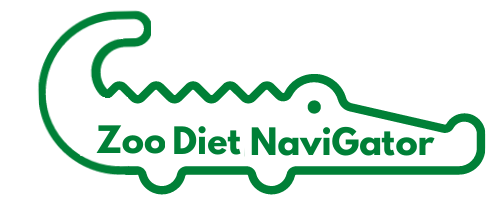Feeds
From ZDN User Guide
Setting up feeds is perhaps the most fundamental first step you can take in NaviGator. There are some feeds built-in, but these are just placeholders for your own data.
Some notes:
- All foods must have a category
- Nutrients are on an as-fed basis (not dry matter!)
- At this moment, you can't change the nutrient units (e.g. kcal vs kJ, IU vs g/kg), but that will hopefully change in the future
Custom units
- Although you can create any custom unit you like ("cup", "scoop", "handful"), there are two custom units that are special because they are used in some reports. If you use these reports and want to see these units on those reports, you should set up these specific units for your feeds.
- "ea" - this means one whole item. 1 ea apple = 1 whole apple. This is used in shopping (e.g. table prep) and ordering/usage reports, and is a common unit when preparing diets, especially for things we generally don't divide further (mouse, worm, fish, etc.). "Ea" does NOT mean "one apple per animal".
- "case" - this means one whole package (case of apples, flat of fish, bundle of browse, bag of carrots, etc.). This unit is used in ordering reports.
- The Custom Units box (Settings > Edit Foods > Details tab) has a space for both amount and the gram weight (Gm_Wgt). Although Amount defaults to 1, you can put other amounts in there. For example, if 25 mealworms = 0.5 g, then you can enter 25 for the amount and 0.5 for the Gm_wgt and ZDN will calculate the weight per gram for you.
- The flow of unit calculations:
- Units for food items on diet cards can be in any units. If not a unit of weight (g, oz, kg, lbs, etc.), then you must define that unit for that food. For example, you might put "1 ea" carrot on a diet, but you will need to define the weight of an "ea" carrot in Settings > Edit Foods.
- Reports such as shopping, ordering, inventory reports convert ALL diet items to grams using either standard conversions (units of weight) or your custom weights (other units, such as "ea", "case", "bundle", "head").
- Some reports will then convert the calculated gram total to units of "ea" and "case" using those conversion values whenever available. If those units are showing up as blanks on your shopping or ordering reports, you do NOT need to convert your animal diets to units of "ea" or "case". You just need to define the amounts for "ea" and "case" in Settings > Edit Foods.
